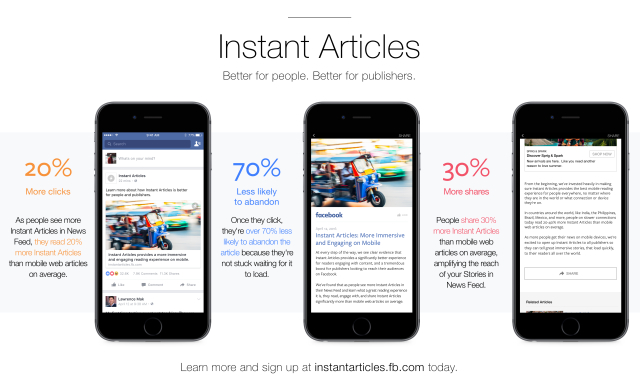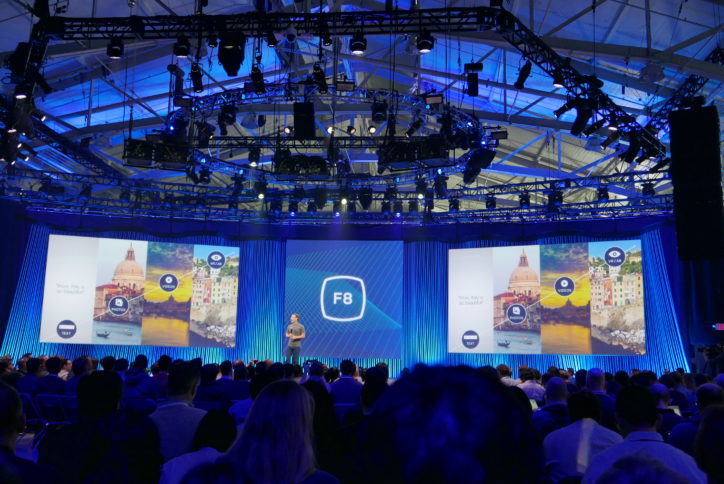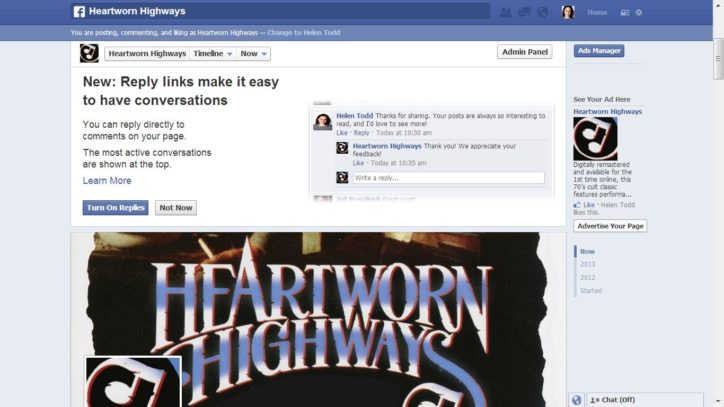
It’s no big surprise that in today’s world of “I want it right away,” website landing pages get high bounce rates. Like microwave popcorn, K-Cup coffee makers, and the instant photography that’s a tap away on your phone, everyone wants to instantly read the latest news on their mobile device. Likewise, if a landing page doesn’t download and open right away, viewers tend to leave before you can say Massapequa. Facebook Instant Articles offer publishers a quick and easy way to publish articles for more engagement from users, and it rewards viewers with a fast-loading, exciting, and reliable mobile experience.
Not only do Instant Articles load 10 times faster than standard mobile sites, but they include interactive features such as “zoom and tilt images, auto-play videos, interactive maps, audio captions, and the ability to like and comment on individual parts of an article in-line.” Facebook describes them as “a faster, more beautiful reading experience on Facebook.”
There is a Downside to Facebook Instant Articles
Facebook Instant Articles aren’t necessarily the end all be all for content engagement, and there is a bit of a downside. Although you may get great engagement, remember that engagement, let alone traffic, is not on your website. You will have to be cool with the tradeoff, in that you lose an opportunity to host your original content on your site to generate traffic, drive page views, and influence conversions or sales.
It’s important to distinguish between content that will offer you more value as an Instant Article, and more valuable content that you should host on your own site. As an example, NBC News found that their viewers are more interested in reading breaking news directly on their website, so they’re posting less of that type of news as Instant Articles, and publishing more feature-type content instead. During a five-day trial in May 2016, The New York Times published ten percent of their stories as Instant Articles, choosing to post more “long-form think pieces or analysis” rather than breaking news.
Outweigh the Positive from the Negative
The upside to Facebook Instant Articles lies not only in the higher level of engagement, but in the high variety of capabilities they offer to both the publisher and end user:
- Instant Articles receive 20% more clicks than mobile articles, and generally get 30% more shares on average than mobile web articles.
- Readers are 70% less likely to leave the article before reading it.
- Instant Articles can include “autoplay” video and “tilt to explore” images.
- The content embedded in Instant Articles is measurable and trackable.
- Instant Articles allow you to embed cookies in order to serve more relevant content to your audience.
- You can track and analyze traffic via Google Analytics with embedded tracking codes.
- They support syndication using a RSS feed whenever you publish regular content.
- Most importantly, you can monetize Instant Articles across Facebook’s Audience Network, so you keep 70% of the profits and 100% of the revenue from direct-sales.
If these reasons aren’t incentive enough to use Facebook Instant Articles, then you better go back to making coffee in a percolator (if you even know what that is).
Sources:
- Instant Articles: Facebook.com
- Why We’re Trying Instant Articles: Hootsuite
- Should You Use Instant Articles? Here’s Why You Should (And Shouldn’t): AdEspresso
- Instant Articles: What Marketers and Publishers Need to Know: Social Media Examiner
- Some publishers appear to be cooling on Instant Articles: Digiday




